Scope of Work
This blog post investigates the nagging notion that warblers of the Old World are drab and boring interesting on multiple levels especially to the extreme bird enthusiast while North American wood-warblers are nothing but beautiful and magical. I have tried to go beyond the emotional perception and actually analyse the colours on the bird, species by species and colour tone by colour tone, to finally put the affair to rest.
Method
To accomplish this, I have taken the easy road, by which I mean I have taken two field guides and flipped through them instead of using check lists. Therefore, the species involved are those wood-warblers depicted in the large edition of the Sibley guide and all the warblers that are in Jonsson’s guide to the birds of Europe (Jonsson’s guide because the German edition also has the English names of the birds, compared to my edition of the much newer guide by Svensson et al.). Very curiously, the number of species included in this study were 55 for both regions.
I then looked at the different colours of the birds, defining colours very broadly by also including black, white (and thus also grey), and brown. The list of colours I discriminated between is here:
brown, black [that’s not a gap, it’s “black”], grey, white, red, orange, yellow, green, blue.
Determining the colour was not always as straight forward as it may seem, e.g. I have found it difficult in some cases to distinguish grey from blue and red/yellow from orange. But overall, I feel it worked out okay.
The Northern Parula turned out to be the most colourful of the wood-warblers, and I assigned this species the colours black, white, grey, green, yellow, and red.
Results
[Europeans may want to sit down while Americans may want to get themselves some enjoyable beverage]
1. Number of Colours per Species
North American wood-warblers sport, on average, a staggering 3.98 colours.
European warblers sport, on average, a less impressive 2.6 colours.
Furthermore, there are significantly more warblers with 4 or more colours in North America than in Europe, while there is not a single North American wood-warbler that is characterized by only one colour, which happens occasionally in Europe.
Here is the graph to visualize what the East side of the Atlantic won’t like to see visualized:
The Blackcap, a true stunner amongst the European Sylvia warblers. Here, a male (black cap) is feeding berries to his offspring, a “female-coloured” bird to its right. You just gotta love the cunning combination of grey, black, and brown. And it’s even got sexual dimorphism – whoa!
2. Relative Abundance of the respective Colours
Of course the number of different colours doesn’t mean all that much when I have included such “colours” into this inquiry as brown, black ,grey and white. Therefore, aside from the number of different colours per species, the relative abundance of each colour in all the species needed to be analysed.
Look below for a visualization of the results:
This comparison is really where I encountered the biggest problem of my inquiry: there was no taking into account the area covered by a certain colour on the bird I was investigating. You see, bird 1 could essentially be mostly coloured in bright yellow with only a slight touch of brown on the rump and bird 2 could be entirely brown with just a tiny spot of yellow on the lores, and both would be of identical impact on the graph seen above. This will explain why colours such as white and black are so dominant, yet neither North American nor European birders would perceive their (wood-)warblers as being coloured this way.
To account for this, I have repeated this test and only considered the most dominant colour on a bird, the one that would psychologically define our perception. A Black-throated Blue Warbler therefore only “gave” its blue part while any Acrocephalus warbler “lost” its white and bits of black and just entered its brown part into the game.
A Marsh Warbler, a typical Acrocephalus that is finely patterned in different shades of brown with a bit of white, but “corrected” must stand and fall as an essentially brown bird – and brown only bird.
The shocking result of the “corrected” colour abundance is given in the graphs below.
Oh dear, does the Old World look bad now. Mostly brown (Reed Warblers, Locustella warblers, etc.), green (Phylloscopus warblers), and grey (Sylvia warblers), with a bit of red (some choice male Mediterranean Sylvia warblers that we scarcely get to see anyway).
And North American wood-warblers? Well, yeah, they are just … colourful, okay? But I bet you never realized just how dominant yellow is.
This Northern Waterthrush may be a wood-warbler, but it is brown. See? Brown, brown, nothing but brown. Mwahahahahaaaaaaa …
Summary of the Results
The nagging notion that warblers of the Old World are drab and boring interesting on multiple levels especially to the extreme bird enthusiast while North American wood-warblers are nothing but beautiful and magical is sadly, tragically, unjustifiably, yet essentially and objectionably objectively TRUE.
Boy, do I need to re-visit North America in spring now…
————————————————————————————————————————————————
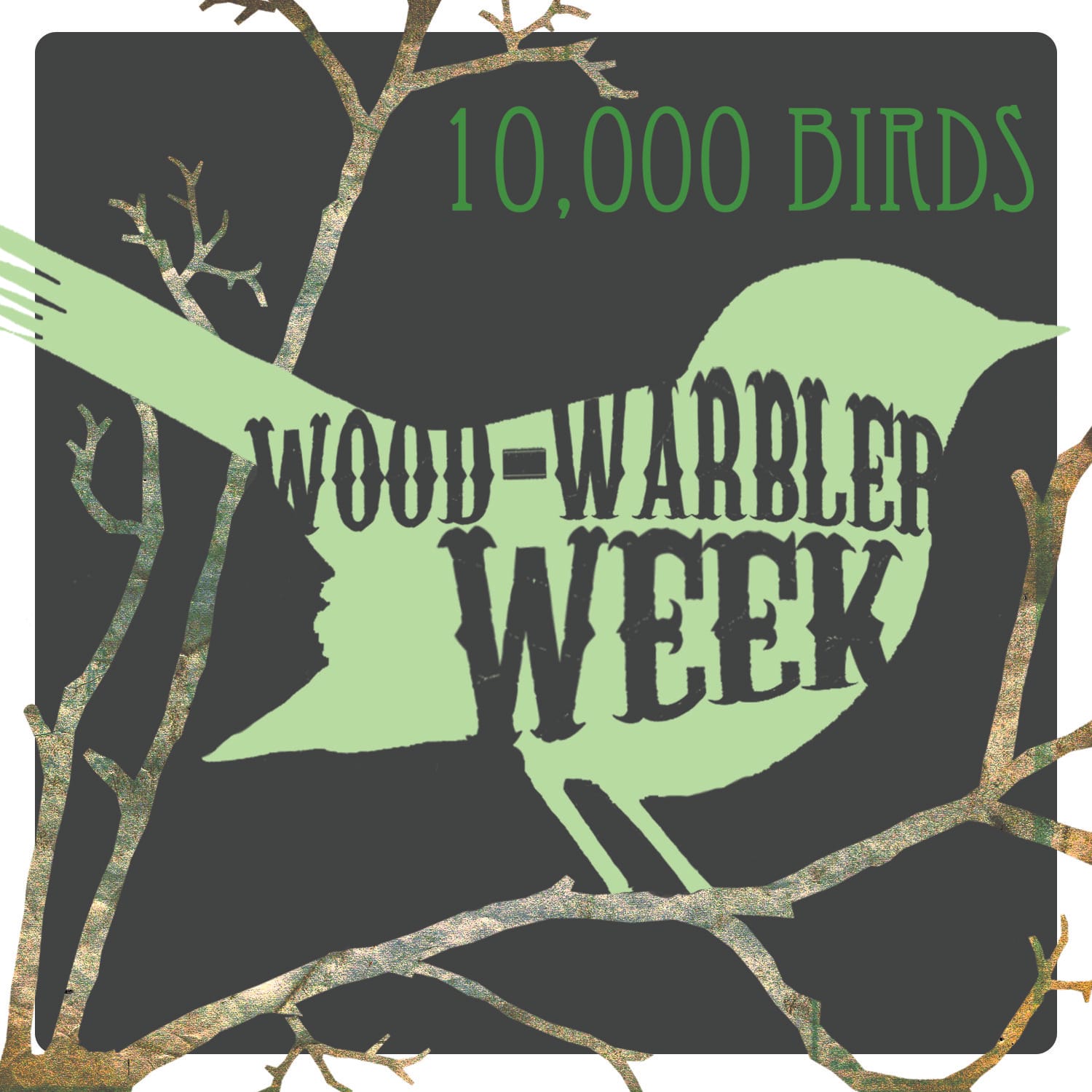 This week, 8 May – 14 May 2011, is Wood-Warbler Week on 10,000 Birds! Though wood-warblers, the mostly brightly colored birds of the family Parulidae, are only found in the New World we felt that birders the world over would be pleased to see a plethora of posts about these striking and sought after species. We are devoting a whole week to wood-warblers but are only just barely scratching the surface of possible topics involving this amazing family of birds.
This week, 8 May – 14 May 2011, is Wood-Warbler Week on 10,000 Birds! Though wood-warblers, the mostly brightly colored birds of the family Parulidae, are only found in the New World we felt that birders the world over would be pleased to see a plethora of posts about these striking and sought after species. We are devoting a whole week to wood-warblers but are only just barely scratching the surface of possible topics involving this amazing family of birds.
Right now great flocks of wood-warblers are making their way north from the southern United States, Mexico, the Caribbean, Central and South America to breed across the United States and Canada. Many other non-migratory wood-warbler species are living their lives across the neotropics, doing their best to survive and pass on their genes. Wood-Warbler Week is a celebration of all wood-warblers and we hope you join us in celebrating these absolutely wonderful birds. Read about them here but also getout and experience them. You won’t regret it!
————————————————————————————————————————————————

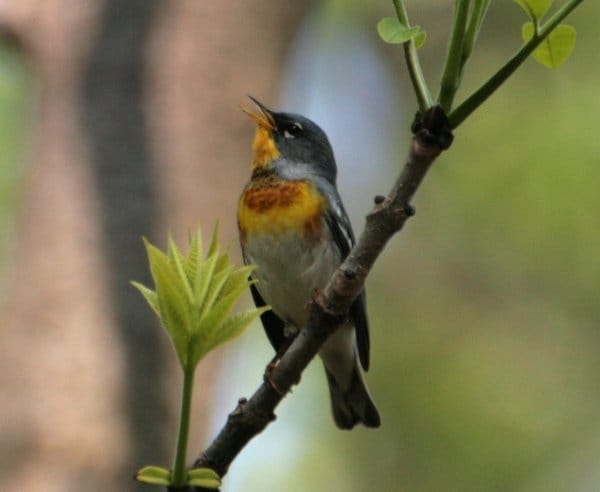
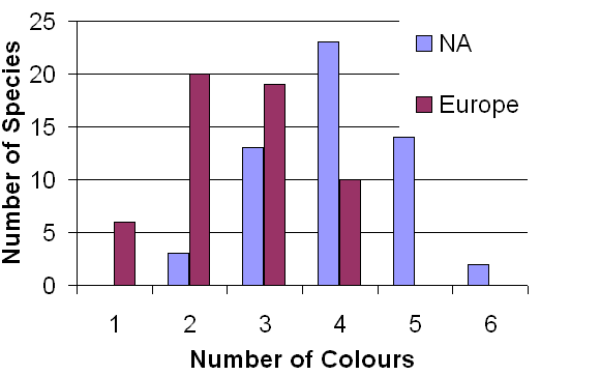
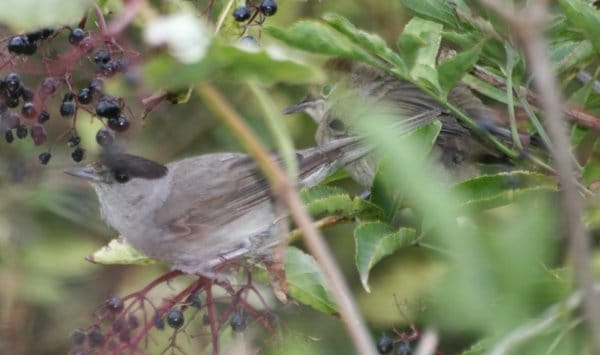

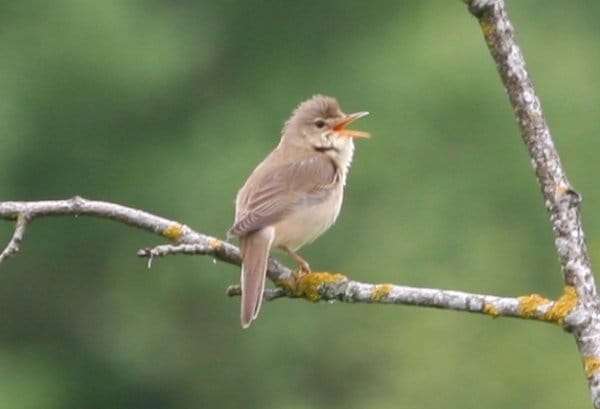
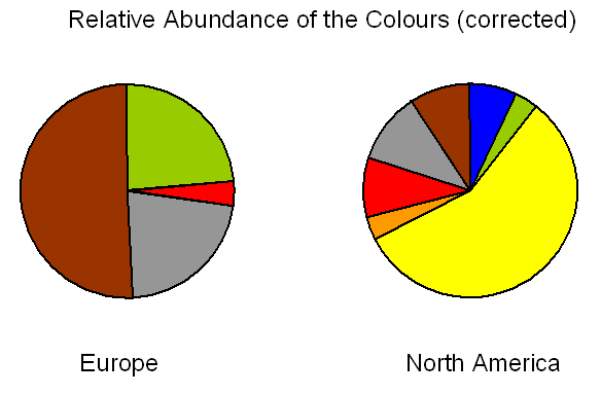
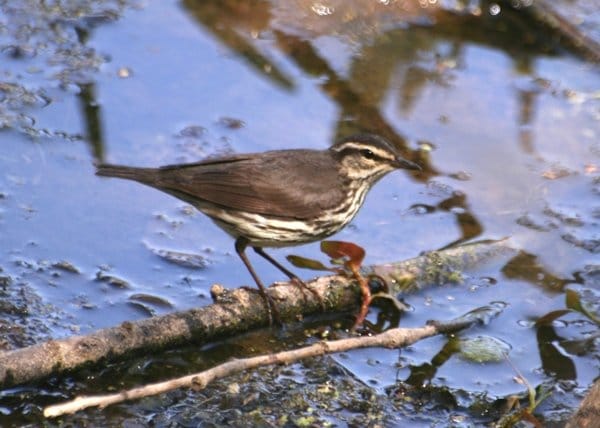










Love the graphs! Come on-you don’t really like the colour yellow do you??!! Brown has to be a better colour. 🙂
This is just awesome. And it helps explain why, in spring, I always get fooled by goldfinches. Get out of the way, goldfinches!
Great post, Jochen!!!!
I would propose to rank the colors (brown and balck and grey = 1 point, Yellow and orange = 2 points, Blue and Red = 3 points), and average the weighted score for each continent. For instance, the northern parula would score (black=1, white=1, grey=1, green=2, yellow=2, and red=3)=10 points. A black cap would score…let see…3 points?
Heading to magee marsh tomorrow with Diane. I wish you could be with us!
Very cool post!
Awesome as always Jochen. I think though if you rank the colours you need to weight it opposite of Laurent’s suggestion. Brown rocks. Right? See the crickets agree with me.
Jochen, you are a sell-out. I have just wasted all that time to read every word of your post and I arrive at the end to realise you have abused statistics to completely dis our beautiful Palaearctic warblers for a bunch of Silly Canaries.
I completely agree with Clare and think that Laurent is just being silly. How could a Northern Parula ever be ranked better than a Blackcap. What is this world coming to. Goosfraba. Goosfraba.
Some people are just getting jaleous here.
Can’t wait for the hummingbird week on 10,000 birds….
I love this. Although to be honest, I wouldn’t mind trading a couple of our colorful warblers for some of your brown ones. I could spare a few bright shiny yellow birds in exchange for hearing a Blackcap sing outside my window.
@Laurent: Hummingbird week! Now that’s an idea!
@Dale: Have the wood-warblers reduced you to nonsense words? Tell Swarovski that you are ill and the only cure is a trip to New York, post haste!
@Clare: shhh, quiet, don’t get me busted! But amongst you and me: larks and pipits rule!
@Corey: thanks, and yes, goldfinches – as much as I appreciated them – were a bit of a difficulty. As were large butterflies in the canopies of trees near St. Louis while I was trying to see and not just hear Yellow-throated Warblers. They were worse than goldfinches.
@Laurent 1: ah, but that would be subjective? Why only two for orange but 3 for red etc.? Look, I am (trying to be) a trained scientist! And yes, I also wish I could be at Magee with you, not just because of the warblers!
@Robert: wow, thanks!
@Clare: thanks a million! And yes, your Gyrfalcon pics alone show that colours like white need to be rated with three-digit figures!
@Dale: Two hearts in our breast, right? You are from southern Africa, I have been there long enough. Larks – Kingfishers – Cisticolas – Rollers – Pipits – Sunbirds. Our advantage is that we can love them all!
@Laurent 2: yes, quite possibly. And now there is a Connecticut and a Kirtland’s at Ann Arbor’s Dolph Park. Aaaaaargh!!
@jmj: DEAL !! Yes, yes, yes!! DEAL! You promised now, did you?! You did!!
@Corey: hummingbird week? Oh geez, … And about Dale having to go to NY as a cure – he needs support by like-minded people, don’t you think? I do – and would volunteer.
Hey,
I’m an ornithologist. I think some of these comparisons are interesting and might be publishable under some context. You’d need to develop some questions a little bit further. Still, might be interesting to try.
Hi Bruce,
thanks, greatly appreciated as I am a zoologist myself. I agree that the differences are intriguing, and the dominance of yellow is particularly interesting. It is one of these things that make you go “Hm, that’s funny.” Sadly, I fear that time constrains and the fact that I am not employed at a research facility are obstacles I am unlikely to overcome. But I might really look at these “findings” a bit more closely, time permitting.
Cheers!!
Read my article about the warbler wars @: http://birdsofohio.webnode.com/news/american-warblers-are-real-warblers/
Nice blog post (I somehow couldn’t leave a comment on your blog, so I respond here)!
Well, I guess no one here in Europe is arguing against the fact that “your” warblers are by far more beautiful than “ours”. It’s just that they shouldn’t really be called warblers. Why not “Wood Gems” ? But warblers they aren’t for they don’t warble.
Have you seen this post of mine, with a link to Dale’s “defection to camp Dendroica”?
http://10000birds.com/the-supremacy-of-the-booted-warbler.htm Cheers!
Nice blog!
Thanks!
Not all of our warblers sound that good, but listen to the Common Yellowthroat’s song: http://xeno-canto.org/browse.php?query=Common+Yellowthroat+%28Geothlypis+trichas%29+74&species_nr=gzyjug
Granted, they don’t all have wonderful songs, but some do. I still say that they are warblers.
To me, our Northern Cardinal sounds more like a warbler than the booted warbler.